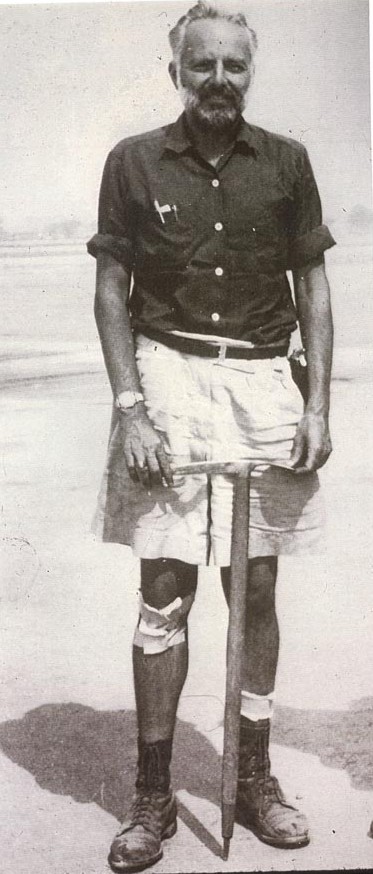James Bond and Cryptozoology
Posted by: Loren Coleman on November 17th, 2006

Did you know there are links between actual people, some real-life characters, who have searched for cryptids and the stories surrounding and linked to "James Bond"?
Ask any spy trivia or "Jeopardy" buff, what was the inspiration for the name "James Bond"? The answer: Ian Fleming, the author of the James Bond novels, got the idea for his title character’s name from the author name of one of Fleming’s favorite tropical books, The Birds of the West Indies.

Birdwatchers, Cryptozoologists, and Spies
As I mention in my Tom Slick biography, there are in-depth links between cryptozoology, ornithology and the "Old Boy Network" in espionage.
Birdwatching and spying were never far apart in the secret world of 20th century intelligence operatives. Former CIA director James Schlesinger and covert actions expert Desmond FitzGerald enjoyed both pastimes (spying and ornithology). Birdwatching could be a useful cover.
Take, for example, a person like S. Dillon Ripley, a noted ornithologist, spy, and postwar Secretary of the Smithsonian Institution. Ripley had been the chief of the Office of Strategic Services (the OSS, the forerunner of the CIA) counterintelligence branch for Southeast Asia. Before his death in 2001, Ripley had engaged in espionage throughout the Orient, run the Smithsonian Institution for 20 years, and was involved in several cryptozoological episodes, including the search for the Spiny Babbler (which he discovered), as well as the quests for the Mountain Quail, the Pink-Headed Duck, and the Pygmy Hog (all of which he did not discover). There is little doubt he used his searching for multiple objectives.
Film fiction has shown the employment of ornithology as a cover. In the film, The Dogs of War, based on Frederick Forsythe’s novel about covert operations in an African nation, the hero, played by Christopher Walken, goes to this target country, disguised as a birdwatcher, to do reconnaissance for a mission. The Walken character is shown reading an African bird field guide on the flight to familiarize himself with the names of the local birds.
The 1970 Billy Wilder movie, The Private Life of Sherlock Holmes is a story including large components of covert activities and the Loch Ness Monster. Interestingly, it also contains a segment set in the exclusive Diogenes Club where Holmes comments on the members’ uncanny ability to turn up “here, there and everywhere.” Then he later adds, “When there’s trouble along the Indian frontier, some of your fellow members pop up in the Himalayas allegedly looking for the Abominable Snowman."
Recently, I posted here about how the "Tom Friend" character in The Abominable Snowman of the Himalayas was probably based on the espionage-involved real life of Tom Slick, who apparently used his 1950s expeditions in search of Yeti to hide his spy work. The New York Times hinted at such things when it saw fit to publish an article reporting on the Russians’ promotion of this theory in an item entitled: "Soviet Sees Espionage in U. S. Snowman Hunt." The New York Times’ April 27, 1957 article, "Soviet Sees Espionage in U. S. Snowman Hunt," told of the Russians’ claim that Tom Slick’s expedition was behind an effort to subvert the Chinese and free Tibet. The trek’s early planning probably occurred at The Argyle, the private San Antonio club the Slick family founded, as well as at the Explorers Club, where Slick returned to give his first report.

"My Name is Bond, James Bond."
The most famous (fictional) agent in modern popular literature is based on this ornithology-espionage connection, and the creator of this character has links to our Yeti story. Yeti expedition leader Peter Byrne, thanks to Tom Slick, met with many "former" intelligence individuals in West Bengal, including World War II British Intelligence officer Ian Fleming. Fleming later was to become famous for his series of fictional spy books featuring the British secret agent 007, James Bond. There’s this business about the name itself, “James Bond,” as noted; it is actually the real name of the author of the book The Birds of the West Indies, lifted by Fleming for use in his novels. The “original 007,” by the way, was the English mathematician, astrologer and occultist Dr. John Dee (1527-1608). Dee served as Queen Elizabeth’s personal spy. "007" was, in fact, Dee’s code number, and was adopted by Ian Fleming for "James Bond."
The networks and connections between the 1950s explorers, ornithologists, cryptozoologists and spies are understudied, yet revealing. Ian Fleming was the brother of Peter Fleming, explorer and writer. One of the latter Fleming’s most remarkable books is Brazilian Adventure, a work in the tradition of Percy Fawcett. Another classic is Fleming’s Bayonets to Lhasa, an account of the British invasion of Tibet in 1904. Peter Fleming was a school-years buddy of Ralph Izzard (author of The Hunt for the Buru, 2001), Gerald Russell, and Ivan Sanderson – all individuals deeply involved in the search for the Yeti and, to varying degrees, friends with Tom Slick.
Ralph Izzard led the 1954 Daily Mail expedition to the Himalayas in search of Yeti. Gerald Russell, discoverer of the giant panda, was a member of Izzard’s 1954 trek and headed the 1958 Slick-Johnson Snowman expedition to eastern Nepal. Ivan T. Sanderson was involved in all manner of cryptozoological investigations (including an African expedition with Russell in the 1930s) and writings, authoring the classic book Abominable Snowmen: Legend Come to Life in 1961.

"Once ONI, always ONI." – JFK.
Ivan Sanderson also was a consultant member of Slick’s 1960-1962 searches for Bigfoot, the so-called Pacific Northwest Expedition headed by Bob Titmus, then Peter Byrne. Ivan T. Sanderson was a commander in the British Naval Intelligence Service (the UK’s sister agency to the USA’s Office of Naval Intelligence, ONI) from 1940-1945, assigned to the Caribbean because of his zoological experiences there. The famed cryptozoologist’s wartime connections to spying apparently did not end in 1945.
Sanderson gives a hint that some of his information sources remained in the realm of the intelligence network in one passage in his book Abominable Snowmen. Therein Sanderson (1961) details two curious encounters with the giant hairy Tok, given to him by “a young American, then in the service of his country, who had been born in the Shan States and brought up there, his parents having been missionaries.” Sanderson “was asked not to publish” the man’s name. This individual, it appears, was probably a member of the extraordinary Young family who were responsible for setting up the Burma Baptist Mission.
The Sanderson contact was, no doubt, William Young, who was: " …perhaps one o
f the most effective agents ever, [who] was born in the Burmese Shan States, where his grandfather had been missionary to the hill tribes. Arriving in Burma at the turn of the century, Grandfather Young opened a Baptist mission in Kengtung City and began preaching to the nearby Lahu hill tribes. Although they understood little of his Christian message, a local oracle had once prophesied the coming of a white deity, and the Lahu decided that Reverend Young was God. His son, Harold, later inherited his divinity and used it to organize Lahu intelligence gathering forays into southern China for the CIA during the 1950s. When William was looking for a job in 1958 his father recommended him to the CIA, and he was hired," (according to Alfred W. McCoy, et.al, in The Politics of Heroin in Southeast Asia, New York: Harper & Row, 1972)
Carleton Coon, the famed anthropologist and investigator of Yeti-Bigfoot reports, whom I met in his home, toured his lab/library, and interviewed about cryptozoology, was a member of the OSS and apparently remained a consultant to the CIA. Coon’s son was the CIA station chief in India George Agogino, anthropologist and cryptozoologist, author of the preface to Sanderson’s Yeti book, was in the CIA too. The list goes on and on.
If you go to see the new James Bond movie in the near future, remember that the hidden joke within it, about how spies hid in plain sight, begins with his name. For spies out there who are also cryptozoologists, they know this occurs on many levels.

Some material above is from Tom Slick: True Life Encounters in Cryptozoology (Fresno, CA: Craven Street-Linden Press, 2002). See that book for more names of spies in the hidden world of cryptozoology and espionage, if you are interested, including more on Tom Slick and the CIA. See also "Tom Slick, Snowmen, and Spying".
About Loren Coleman
Loren Coleman is one of the world’s leading cryptozoologists, some say “the” leading living cryptozoologist. Certainly, he is acknowledged as the current living American researcher and writer who has most popularized cryptozoology in the late 20th and early 21st centuries.
Starting his fieldwork and investigations in 1960, after traveling and trekking extensively in pursuit of cryptozoological mysteries, Coleman began writing to share his experiences in 1969. An honorary member of Ivan T. Sanderson’s Society for the Investigation of the Unexplained in the 1970s, Coleman has been bestowed with similar honorary memberships of the North Idaho College Cryptozoology Club in 1983, and in subsequent years, that of the British Columbia Scientific Cryptozoology Club, CryptoSafari International, and other international organizations. He was also a Life Member and Benefactor of the International Society of Cryptozoology (now-defunct).
Loren Coleman’s daily blog, as a member of the Cryptomundo Team, served as an ongoing avenue of communication for the ever-growing body of cryptozoo news from 2005 through 2013. He returned as an infrequent contributor beginning Halloween week of 2015.
Coleman is the founder in 2003, and current director of the International Cryptozoology Museum in Portland, Maine.










Excellent bit of information, Loren! Thanks for the article.
I prefer my cryptids shaken, not stirred.